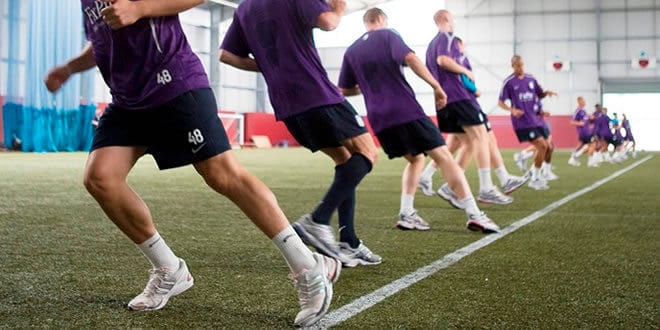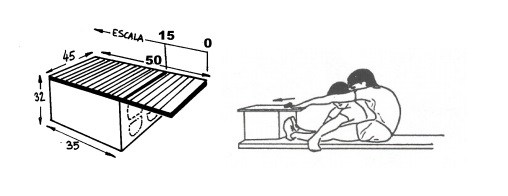The Eurofit Battery, based on the principle of sport for all from the Council of Europe, aims to motivate children to participate in sports activities conducted in the area of Physical Education and the primary goal is to evaluate the physical condition of the student. In this article, we will focus on describing each of the tests in this battery. This Eurofit Battery is used by more than 50,000 European schoolchildren, is low-cost, and easy to perform (1).
The Eurofit Battery test is the result of many years of coordinated research at the European level, in the field of evaluating children’s physical fitness. The research has focused not only on finding tests that are easy to apply in schools, which best indicate the physical fitness of our students (1).
Eurofit represents a practical battery, based on a series of relevant and experienced tests, with an excellent cost-effectiveness ratio. It allows us to know the immediate state of our students’ physical fitness, as well as their changes and trends.
What physical qualities does the Eurofit Battery evaluate?
The attached table shows the physical qualities of the Eurofit Battery. Subsequently, each of the tests will be described in detail.

What are the tests of the Eurofit Battery?
In the box attached in the image below, each of the tests is described schematically, and then we will focus on breaking down each of them.
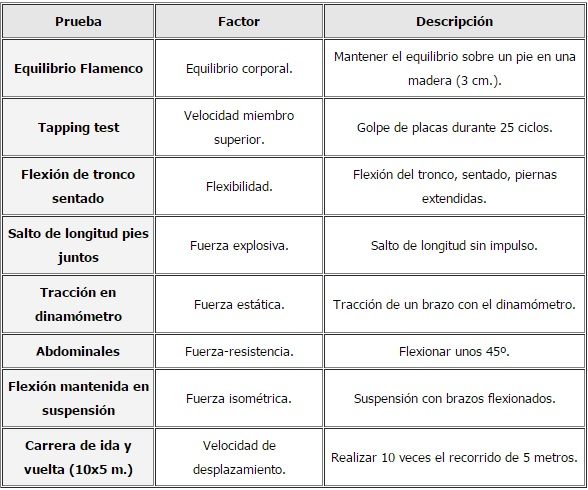
Flamingo balance
Objective: measure general balance (3).
Material: small balance beam.
Description: the test consists of maintaining a one-legged position, keeping balance on a balance beam for one minute.
Evaluation of the test: to perform the test, the number of attempts the student needed to maintain balance during the established minute should be counted. It should be reiterated that attempts, not falls, will be counted. For example: if the subject needs 3 trials, those 3 points will be assigned (1), (3).
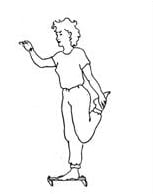
Plate tapping
Objective: measure the upper limb extremities.
Material: a table with a design featuring two circles separated by a distance of 80 centimeters. The circles will have a total of 20 centimeters, and in the center, there will be a rectangle 10 centimeters wide where we should place the hand that does not perform the movement.
Description: the plate tapping test consists of standing in front of the table with feet at hip width and placing the non-dominant hand on the central surface and the dominant hand on the circle on one side.
Evaluation of the test: the test consists of alternately touching the two circles a total of 25 times. The stopwatch will stop when 50 correct contacts are made with both circles (1), (3).
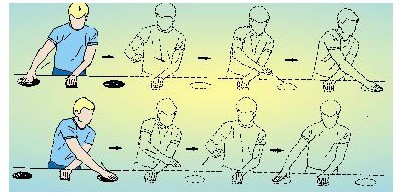
Sit and reach
Objective: measure waist flexibility.
Material: a box with a design similar to the one in the image below.
Description: the subject stands facing the widest side of the box. The feet must be fully supported on the box. We must bend the trunk forward without bending the legs, extending the arms and pushing a ruler located on the top.
Evaluation of the test: the greatest position the subject can maintain for at least 2 seconds will be recorded. An important aspect to highlight is that jerks cannot be made, and 2 attempts will be allowed (1),(3),(4).
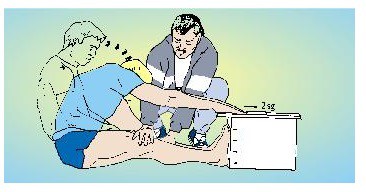
Standing long jump
Objective: measure the explosive strength of the lower body.
Material: a sandpit or a thin mat that allows for cushioned landing, a ruler should be placed on the ground to measure the jump distance.
Description: the subject stands with feet slightly apart and at the same distance from the starting line. With the help of the arm’s momentum, a jump forward will be made without a prior run-up. It is important not to step on the starting line.
Evaluation of the test: the measurement will be made from the starting line where the subject took off to the place where they landed. The back of the furthest foot will be measured. Additionally, a total of 2 attempts will be allowed (1), (3).
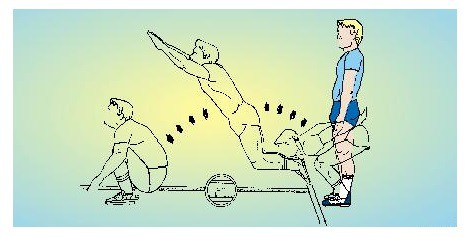
Handgrip dynamometry
Objective: measure static strength in the hands.
Material: the necessary material will be a dynamometer with adjustable pressure and precision of 500 grams.
Description: in a standing position, with the arm extended along the body without touching any part of our body, we will grip the dynamometer with one of our hands. At the signal, we should squeeze as hard as possible to achieve the greatest pressure.
Evaluation of the test: The marker should be visible and not touch any part of the body. The best of the two attempts will be recorded, noting the mark in kilograms and fractions of 0.5 kg. (1),(3),(4).
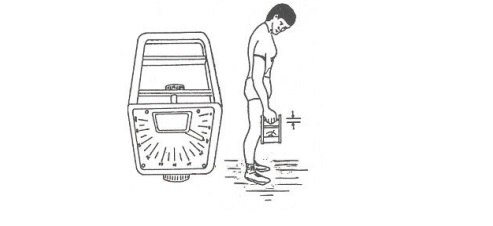
Trunk flexions in 30 seconds
Objective: measure the endurance strength of the trunk muscles (abdominals).
Material: the necessary material is a stopwatch and a mat.
Description: in a supine position with legs bent and feet fully supported on the ground, we will perform the maximum number of sit-ups in 30 seconds, placing the hands clasped behind the head.
Evaluation of the test: during a duration of 30 seconds, the maximum number of sit-ups should be performed, touching the elbows to the knees and the back to the ground to complete a full sit-up. Preliminary trials can be performed, but this test will only be performed once (1),(3),(4).

Maintained arm flexion in suspension
Objective: measure the endurance strength of the arms.
Material: the necessary material is a horizontal bar approximately 2.5 cm wide, located 2.5m from the ground surface.
Description: with the help of a chair, the subject should grip the bar with a forward grip. Subsequently, we must flex the arms until the chin is above the bar without touching it, and the feet do not contact anything.
Evaluation of the test: the goal is to maintain the position for as long as possible. Swaying should be avoided, and only one attempt will be allowed (1),(3),(4).
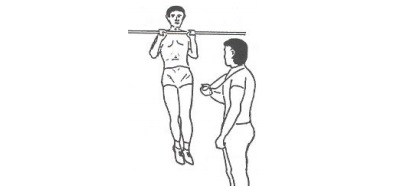
10 x 5 shuttle run
Objective: measure displacement speed.
Material: four cones marking the test area.
Description: at the signal, the subject must start at speed and cover the round-trip route between two lines separated by 5 meters with an outer margin of 2m.
Evaluation of the test: this route should be repeated 5 times round-trip (1),(3),(4).
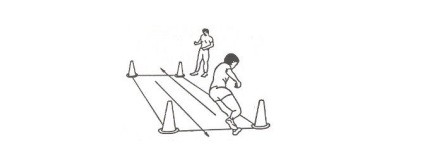
Course-Navette
Objective: measure endurance (maximum aerobic power).
Material: flat terrain with two lines separated by a distance of 20 meters and with margins on the outer part of at least one meter.
Description: at the acoustic signal, the subject must start and reach the line on the opposite side at the moment the sound signal is repeated. These acoustic signals will progressively increase, raising the difficulty of the test.
Evaluation of the test: the last period in which the subject successfully reached the finish line will be recorded (1),(3),(4).
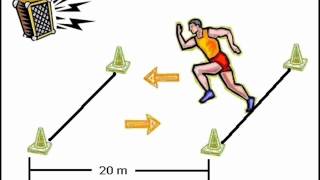
Weight and height
The Eurofit Battery includes the measurement of body weight and height, using a scale and a stadiometer with precision up to centimeters.
Bibliography
- Gálvez, A.J. (2010). Measurement and evaluation of physical condition: Eurofit Battery. Revista efdeportes, 14(141).
- Conseil de L´Europe (1989) EUROFIT. Revista de Investigación, Docencia, Ciencia, Educación Física y Deportiva, 12-13: 8-49.
- García Baena, J. et al. (2001) Eurofit Program: Computer file. Madrid: MECD.
- Fernández, P. (2009). Eurofit: Test battery for assessing physical condition. University of Burgos. Available [online]. Retrieved on 27/05/2015.
